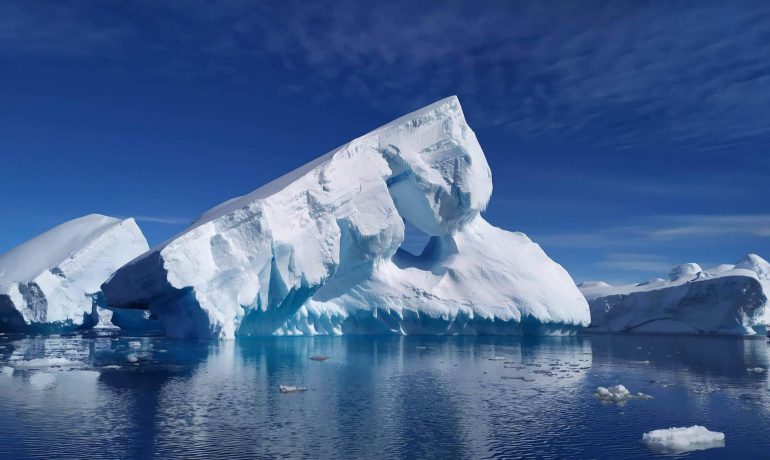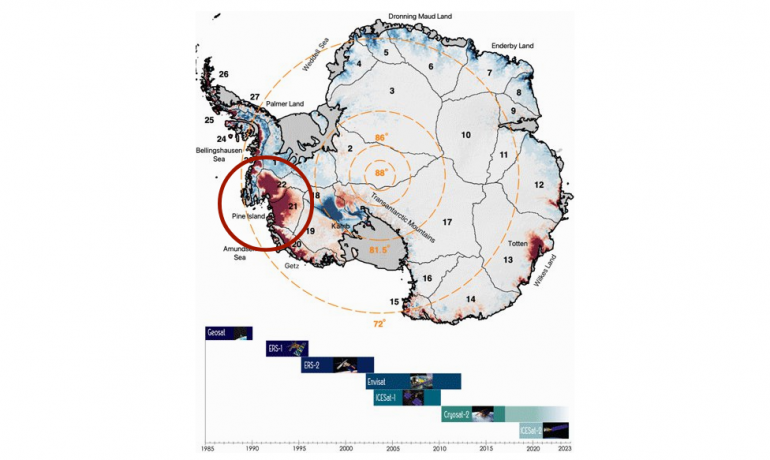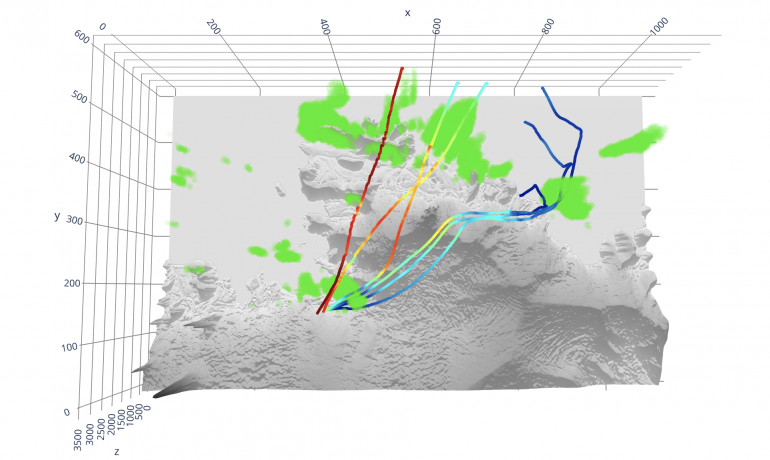The reason for the very rapid melting of some glaciers in the Antarctic may be atypical hot core in the atmosphere, which is formed by the overlapping of two flows of warm air. This conclusion was reached by meteorologists at the National Antarctic Scientific Center within the PolarRES project: Exploring future polar climates. PolarRES is a multi-partner project, and a member of the EU Polar Cluster; it is financed under Horizon 2020 program.
In the project, our scientists are investigating extreme warming and precipitation in Antarctica.
“We study the physical mechanisms of formation of extreme warming at different scales, as well as in the climate change perspective. First of all, we focus on explaining the formation of “hot spots” – certain areas of the coast of Antarctica, where the melting of glaciers occurs much faster than in neighboring areas,” notes Denys Pishniak, head of the Department of Atmospheric Physics and Geospace of the National Antarctic Scientific center, a participant of the project.
Although the melting (namely, the decrease in height) of the ice sheet is affected by an extremely large number of factors, the study showed that the contribution of atmospheric processes is very significant. In particular, it was found that during warming in the area of the Pine Island and Thwaites glaciers, an atypical hot core has been formed in the atmosphere.
Our scientists obtained such a result at the beginning of 2023 and assumed that this core is the main reason for the local melting of the mentioned glaciers. Therefore, subsequent studies were aimed at explaining the mechanism of formation of the hot core of the atmosphere and the routes of heat transfer to the surface of the glacier.
And now scientists have discovered an unexpected feature! In areas of local warming, the flow of moist warm air from the north is superimposed on the warm foehn (dry) flow from the east. As a result, firstly, a thick layer of warm air is formed, and, secondly, precipitation in the form of snow is formed (due to the forced rise of moist air over drier, as well as over the continental slope).
This abundant snow in the process of falling has melted away and turned into warm rain. That is, precipitation probably takes heat from the warm part of the surface atmosphere and transfers it to the surface of the glaciers. Besides, rain makes the snow cover darker and absorbs more light and infrared radiation, which also accelerates its melting. This is the assumption scientists have about the formation of a hot core and will continue to test it.
Also relevant is the question of how the outlined processes will change if the atmosphere becomes a little warmer? Scientists hope to get answers, or at least clarify logical assumptions, over the next year of collaboration within the project.
Link to simulation results.
Thanks to Denys Pishnyak for the information provided.




